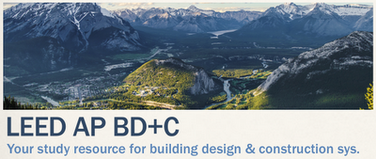
Building Design
Facts/Rules:
• After an idea is developed for a building, an architect helps consolidate the owner’s thoughts and designs the form of the building. They assemble a group of engineers and specialists to help work out the details and scheme for the building.
• Drawings and specifications are produced to explain how and what the building will be made of.
• A contractor is hired either by negotiation or bid, who then hires subcontractors to complete specific portions of the work (e.g.: casework, electrical, doors/hardware)
• Drawings/spec are submitted to the necessary municipality (city or county, typically) who verifies conformance with building code and local requirements/ordinances.
• The building inspector and design team should observe the work at regular intervals to verify compliance with the construction documents.
Concepts/Goals:
• Designers are able to use a limitless palate of materials and systems to produce a building of any desired form/texture
• Designers are bound by physical limitations (e.g.: size of site, soil bearing capacity, maximum span), budget, and legal restrictions.
• Design professionals need to have a broad understanding of people, climate, physical principles of materials, available technologies, legal restrictions, and contractual arrangements and obligations under which buildings are built.
• Designers must answer several questions when designing a building:
• What will give the required functional performance?
• What will give the desired aesthetic result?
• What is possible legally?
• What is most economic?
• How can we build in a sustainable manner?
Design Principles + Design Impact on Human Behavior
Vocabulary:
• Ahwahnee principles: a collective vision of how urban and suburban planning should follow certain fundamental principles regarding community size, integration, transportation, open space, pedestrian paths, native vegetation, water and energy use.
Facts/Rules:
Winds
Pedestrian Circulation
Noise
Facts/Rules:
• After an idea is developed for a building, an architect helps consolidate the owner’s thoughts and designs the form of the building. They assemble a group of engineers and specialists to help work out the details and scheme for the building.
• Drawings and specifications are produced to explain how and what the building will be made of.
• A contractor is hired either by negotiation or bid, who then hires subcontractors to complete specific portions of the work (e.g.: casework, electrical, doors/hardware)
• Drawings/spec are submitted to the necessary municipality (city or county, typically) who verifies conformance with building code and local requirements/ordinances.
• The building inspector and design team should observe the work at regular intervals to verify compliance with the construction documents.
Concepts/Goals:
• Designers are able to use a limitless palate of materials and systems to produce a building of any desired form/texture
• Designers are bound by physical limitations (e.g.: size of site, soil bearing capacity, maximum span), budget, and legal restrictions.
• Design professionals need to have a broad understanding of people, climate, physical principles of materials, available technologies, legal restrictions, and contractual arrangements and obligations under which buildings are built.
• Designers must answer several questions when designing a building:
• What will give the required functional performance?
• What will give the desired aesthetic result?
• What is possible legally?
• What is most economic?
• How can we build in a sustainable manner?
Design Principles + Design Impact on Human Behavior
Vocabulary:
• Ahwahnee principles: a collective vision of how urban and suburban planning should follow certain fundamental principles regarding community size, integration, transportation, open space, pedestrian paths, native vegetation, water and energy use.
Facts/Rules:
- Typical Human Comfort Zone
- Winter = 63°F - 71°F
- Summer = 66°F - 75°F
- Tolerable humidity = 30% - 60%
- Uncomfortable humidity = + 75%
Winds
- Basic Speed = 70 - 80 miles/hour
- Unnoticeable = < 50 feet/minute
- Pleasant = 50 - 100 feet/minute
- Pleasant *and* noticeable = 100 - 200 feet/minute
- Drafty = 200 - 300 feet/minute
- Uncomfortable = + 300 feet/minute
- Pressure varies as the square of the velocity (if velocity doubles, pressure quadruples)
Pedestrian Circulation
- Area of a person = 3 sf
- Easy movement = 13 sf
- Crowd movement = 7 sf
- No movement = 3 sf
- Sidewalks = 5’-0” wide min
- Collector walks = 6-0” - 10’-0” wide min
Noise
- Smallest difference in 2 sounds the human ear can detect is 1 decibel
- Sleeping, studying, whispering = 30 decibels
- Conversation, comfort = 50 - 60 decibels
- Safety Threshold = 85 decibels
- Rock Band! = 90 - 100 decibels
- Trees thin out high frequency noises
- Each increase of 10 decibels the human ear perceives as 10x loud.
- Typically doubling the distance between source and ear reduces level by 6 decibels
- On freeways, doubling the distance between source and ear reduce level by 3 decibels
- Winds add “white noise” that blurs any one sound frequency.
- Walls close to a noise source reduce high frequency, but midway between the source and the ear does nothing.

